IN THIS POST
–Map of Rivers of Pakistan
–Quick Facts About Rivers in Pakistan
–River Indus
–River Chenab
–River Sutlej
–River Ravi
–River Jhelum
–Other Popular Rivers of Pakistan
Home to some of the mightiest mountain ranges, beautiful lakes, wondrous desert regions, and breathtaking hill stations, Pakistan is one of the most beautiful countries in the world. It is because of these amazing topographical features that our country was recently accredited as the top tourist destination for 2020 by Conde Nast Traveller, a US-based luxury travel magazine, and was recognised among the year’s 10 best underrated holiday destinations by Forbes, which is another well-known international publication.
Map of Rivers of Pakistan

Originating from the snow-covered Himalayan and Karakoram mountain ranges as shown in the map above, the system of rivers in Pakistan is the country’s yet another amazing natural aspect. The system is based on five major rivers that run through the entire country and meet in the Punjab province, which is why it is often spelled as ‘Panjaab’ (panj means five and aab means water). Further in this blog, we will shed light on some of the most amazing facts about the rivers of Pakistan. So, here we go!
Quick Facts About the Rivers of Pakistan
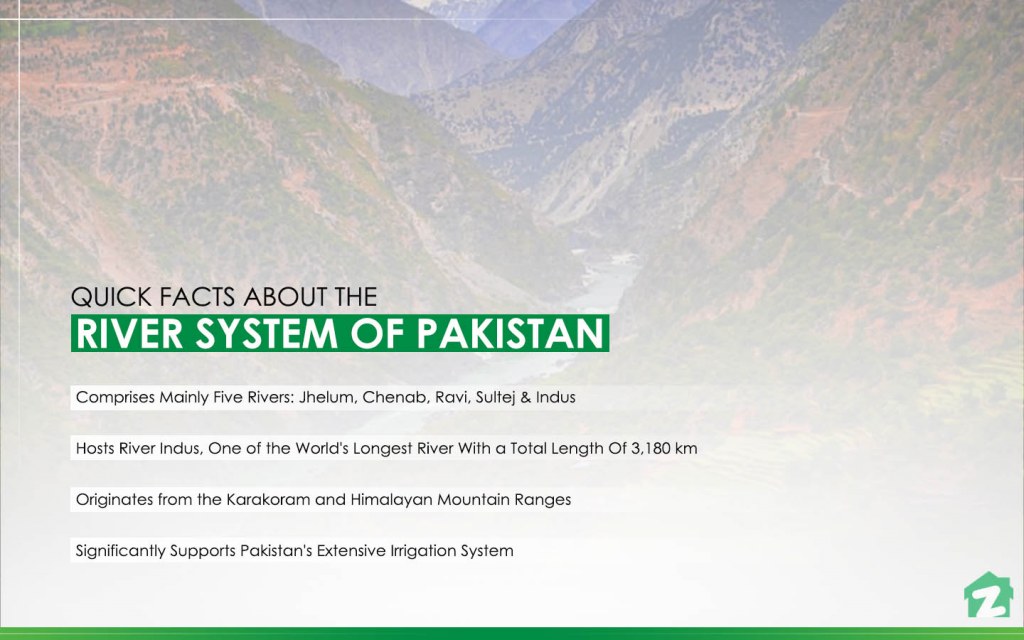
River Indus
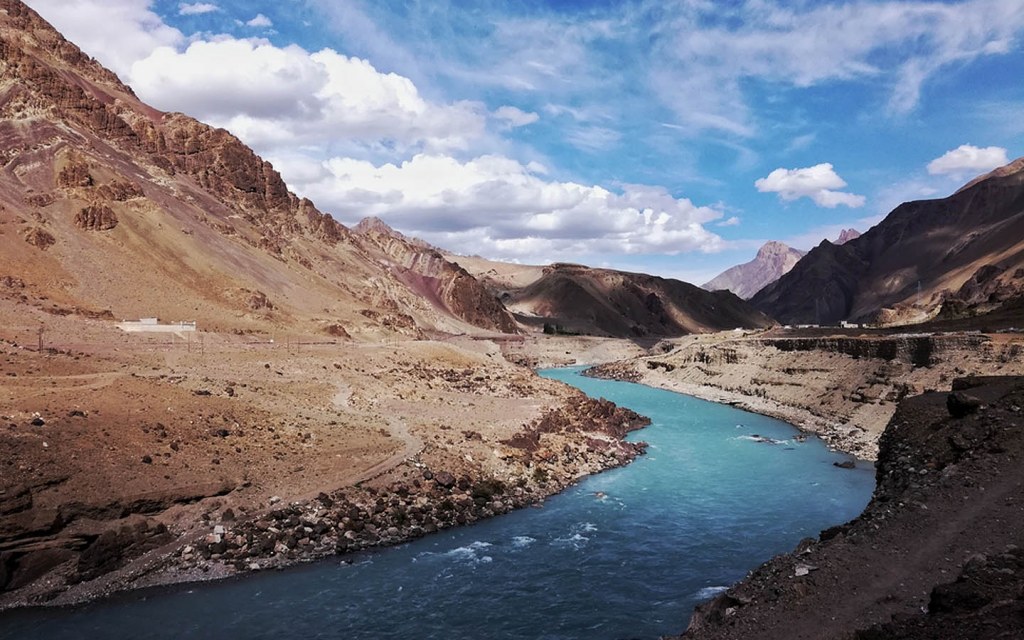
With an enormous length of over 3000 metres, River Indus is not only the longest river of Pakistan but it is also counted among the longest rivers in the world. The total drainage area of this river is around 450,000 sq miles (1,165,000 sq km), out of which 175,000 sq miles (453,000 square km) is found in the foothills and mountain ranges of the Hindu Kush, the Himalayas, and the Karakoram Range; the rest the part of the system of rivers in Pakistan and is found in the country’s semi-arid plains.
Originally known as Indu or Hindu, the name of this river has been derived from the Sanskrit language. With an annual flow of about 58 cubic miles (243 cubic km), which is twice that of the River Nile, the longest river of Pakistan receives its most famous tributaries in Punjab, namely, Chenab, Jhelum, Ravi, and Sutlej. So, let’s get to know more about these tributaries of the Indus River, which are also an important part of the river system of Pakistan.
River Chenab
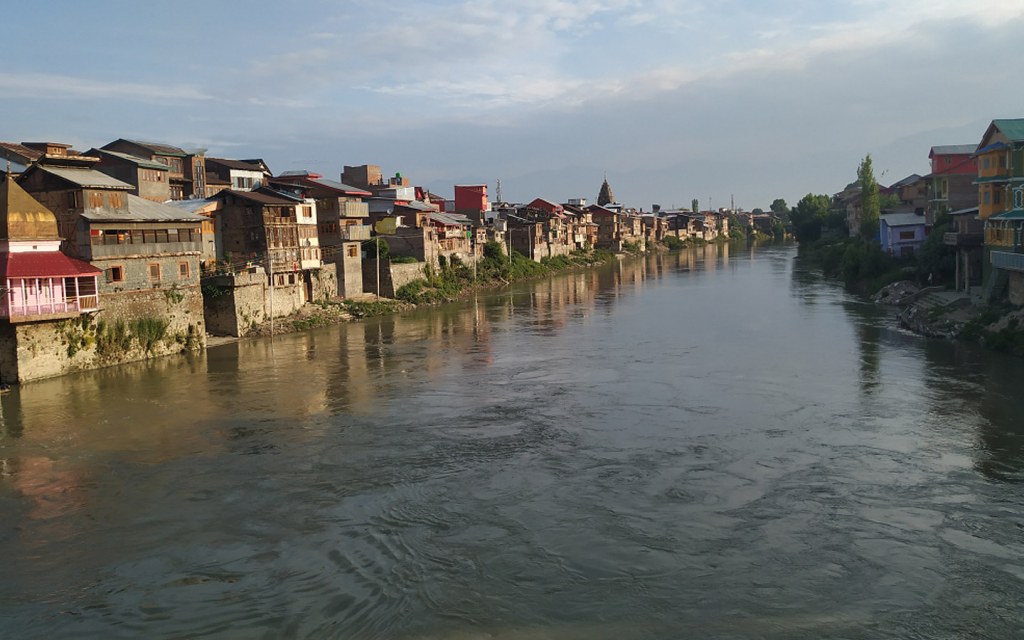
The river of Chenab is formed by the confluence of water streams coming down from the mountain ranges in the Indian Subcontinent. Descending from the uplands and turning southwest, the river enters Pakistan, into the broad lowlands of the province of Punjab with rich soil, perfect for irrigation. It is where Chenab meets Jhelum and empties into the Sutlej River, which is also the tributary of the River Indus. Chenab is the second-longest river of Pakistan with a total length of about 974 km (605 miles). The river fruitfully serves several irrigation canals in Punjab.
River Sutlej
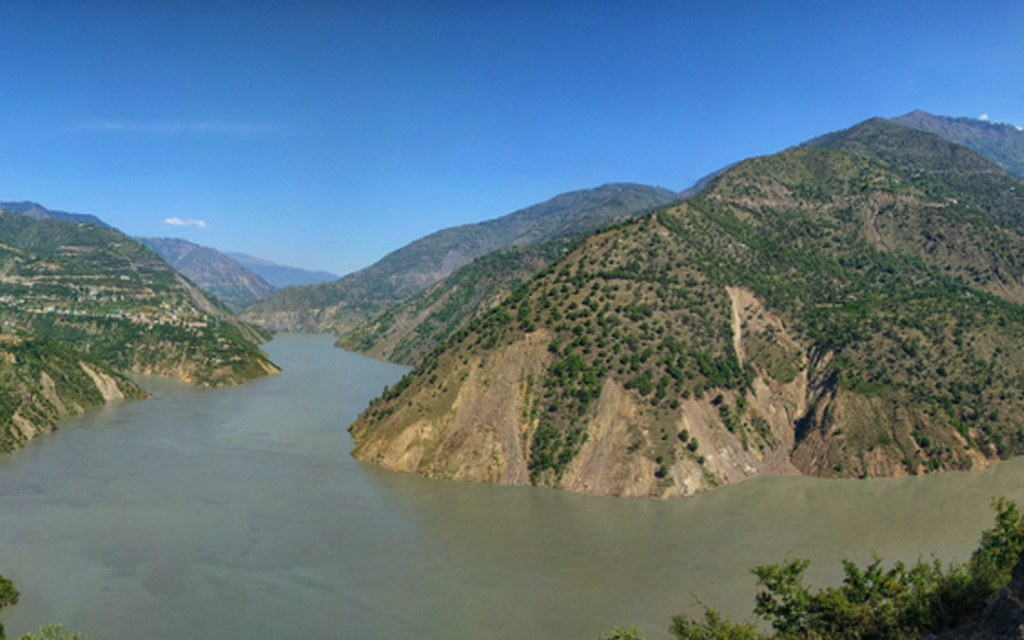
The longest of the five tributaries of the River Indus, Sutlej is one of the most famous rivers of Pakistan. It flows through an extremely significant historic crossroad region of Punjab in the Indian Subcontinent. Some 550 kilometres long, the water of Sutlej, also called the Red River, is rightfully used by Pakistan and India according to a treaty, which was signed between both the countries in the 1960s known as the Indus Water Treaty. After entering Pakistan the river flows for another 350 km (220 miles) before it joins the River Chenab in the west of Bahawalpur.
River Ravi
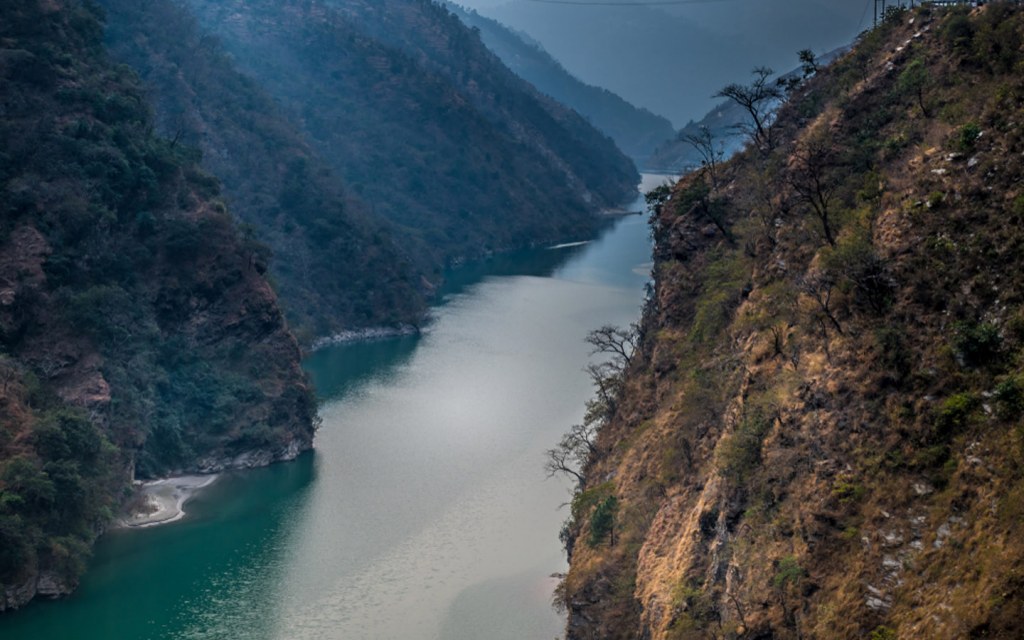
River Ravi, like other rivers of Pakistan, originates from the Himalayan mountain range. Flowing through the south-western region of the Indian Subcontinent, it enters into the Pakistani region and merges with the river of Chenab. River Ravi is around 720 kilometres in length, which makes it one of the longest rivers of Pakistan. Ravi’s hydrology chiefly depends on the spring snowmelt and the South Asian monsoon, which brings heavy rains to the region in the post-summer season. Since Ravi’s eastern bank runs along the city of Lahore is located, it’s often called ‘The river of Lahore‘
River Jhelum
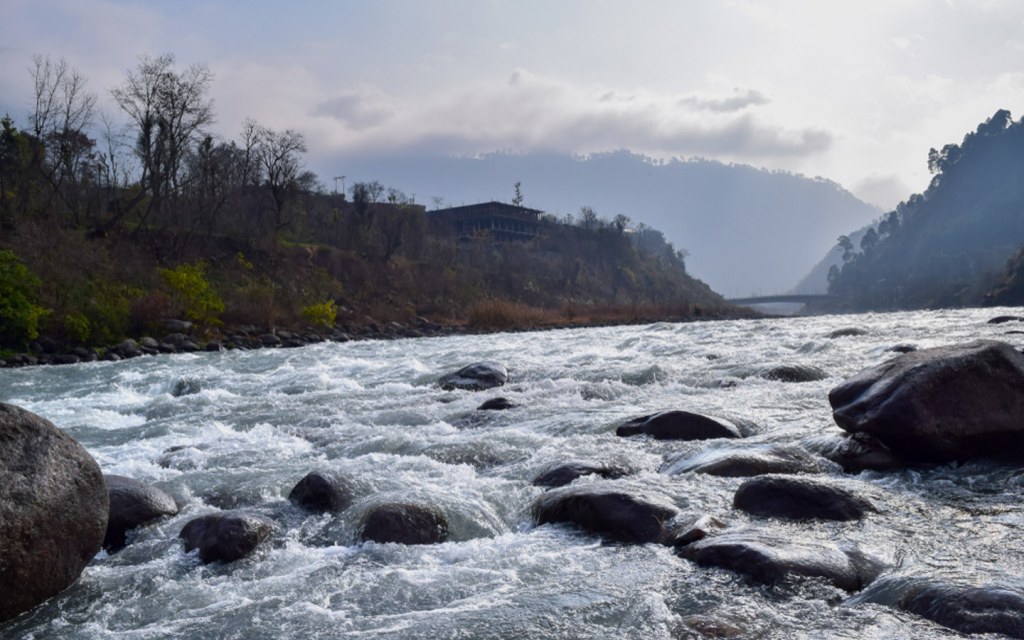
The total length of River Jhelum is around 774 kilometres, which makes it one of the longest rivers of Pakistan. It is a very famous tributary of the River Chenab, which originates in the south-eastern region of the valley of Kashmir and runs through the city of Srinagar before making its way into the Pakistani border. Near Muzaffarabad, Jhelum is accompanied by the largest tributary of Neelum River. River Jhelum plays a vital role in the irrigation system of the region as it has many barrages and dams constructed on it. Mangla Dam, which is considered among Pakistan’s largest dams and was built on this river in 1967. The storage capacity of the dam is nearly 5.9 million acre-feet. Rasul Barrage and Trimmu Barrage are also constructed on River Jhelum.
Other Popular Rivers of Pakistan
Along with some of the major rivers mentioned above, the river system of Pakistan comprises many other small rivers and tributaries have been listed in the following table with their respective lengths.
| River/Tributary | Length (KM) |
| Gomal River | 400 |
| Soan River | 250 |
| Swat River | 240 |
| Kunar River | 480 |
| Hingol River | 560 |
| Gilgit River | 240 |
| Kunhar River | 166 |
| Dasht River | 430 |
Now that we have discussed all the important facts about rivers of Pakistan, it’s time for us to wrap up this blog. We hope you have enjoyed reading it. Please feel free to share your feedback regarding any of our blogs by emailing us at blog@zameen.com.
Read more of our travel guides and informative pieces based on different lifestyle-related matters by heading over to our blog section. Subscribe to Zameen Blog’s e-newsletter and never miss out on any of our updates. Don’t forget to follow us on Facebook and Instagram.



